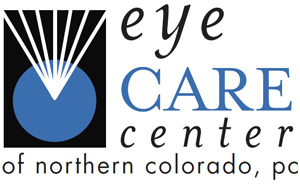You may have read our previous post on age-related macular degeneration (AMD), where we learned that AMD is the leading cause of vision loss in older adults. It affects more than 10% of those over the age of 75, making it an area of significant concern. We discussed that there are two types of AMD: dry (atrophic) and wet (exudative/neovascular). Today, I’d like to focus more closely on Dry-type AMD.
What is Dry-type AMD?
Dry-type AMD is actually the most common form of AMD, accounting for about 85-90% of cases.
Over a period of years, AMD can progress through three stages:
- Early – You’re unlikely to notice any symptoms at this stage, which is characterized by the presence of medium-sized “drusen”, which are yellow protein deposits beneath the retina.
- Intermediate – At this stage, you may notice some minor vision changes, along with larger drusen and/or pigment changes in the retina.
- Late – At this stage, there is severe vision loss.
Since in its early stages, AMD doesn’t present any symptoms, a comprehensive dilated eye exam of the back of the eye is the only way to diagnosis it. This is why regular vision exams are so incredibly important. An annual exam allows your doctor to stay up-to-date with your eye health and, should drusen be detected, begin measures designed to slow down the degeneration.
As the disease progresses, you may experience:
- Wavy or blurred vision
- Visual distortion such as straight lines for sentences on a page appearing bent
- Extra sensitivity to glare
- Loss of color vision or intensity
- Difficulty seeing details in low-light conditions
- Problems recognizing faces
Treatments to Slow Vision Loss
The unfortunate fact is that, as of yet, there are no cures for Dry AMD. There are, however, ways to slow down the degeneration significantly. In fact, a special combination of nutritional supplements can potentially slow down the disease’s progression.
Two large clinical trials conducted by the National Eye Institute (NEI)—the Age-Related Eye Disease Study (AREDS; 2001) and a follow-up study called AREDS2 (2013)—found that a special formula of nutritional supplements could reduce an AMD patient’s risk of progressing to the advanced stage by about 25% over a five-year period. So far, there is no evidence that supplements benefit the patients in the early stage.
However, the original AREDS formula included beta carotene, which was later found to be linked to a higher lung cancer rates in smokers. In the follow-up AREDS2 study researchers examined the formula without beta carotene, replacing it with antioxidants lutein and zeaxanthin and lowering the zinc content.
The AREDS2 special formula includes:
- Lutein (10mg)
- Zeaxanthin (2mg)
- Vitamin C (500mg)
- Vitamin E (400IU)
- Zinc (80mg)
- Copper (2mg)
Although both AREDS and AREDS2 formulas are available over the counter, it’s best to consult your doctor before you start taking either of them. Determining the best formula for you depends on your medical history, type of AMD and stage of the disease.
Home Monitoring
If you’ve been diagnosed with AMD, you may be given an “Amsler Grid” to use at home as an early warning system for changes in your vision. You simply view the grid and check to see whether lines on it look wavy or distorted, or whether areas of the grid are missing.
If you wish to be screened or treated for AMD, please schedule an appointment with me, Justin Kanoff, MD, or any of our other highly-qualified retina specialists: William Benedict, MD, Matthew Manry, MD, or Elisha Tilton, MD at the Eye Care Center of Northern Colorado by calling 303-772-3300.
View Powerpoint slides from my lecture for the Boulder Community Health System’s Community Education series on “Advances in Treating Macular Degeneration.”
